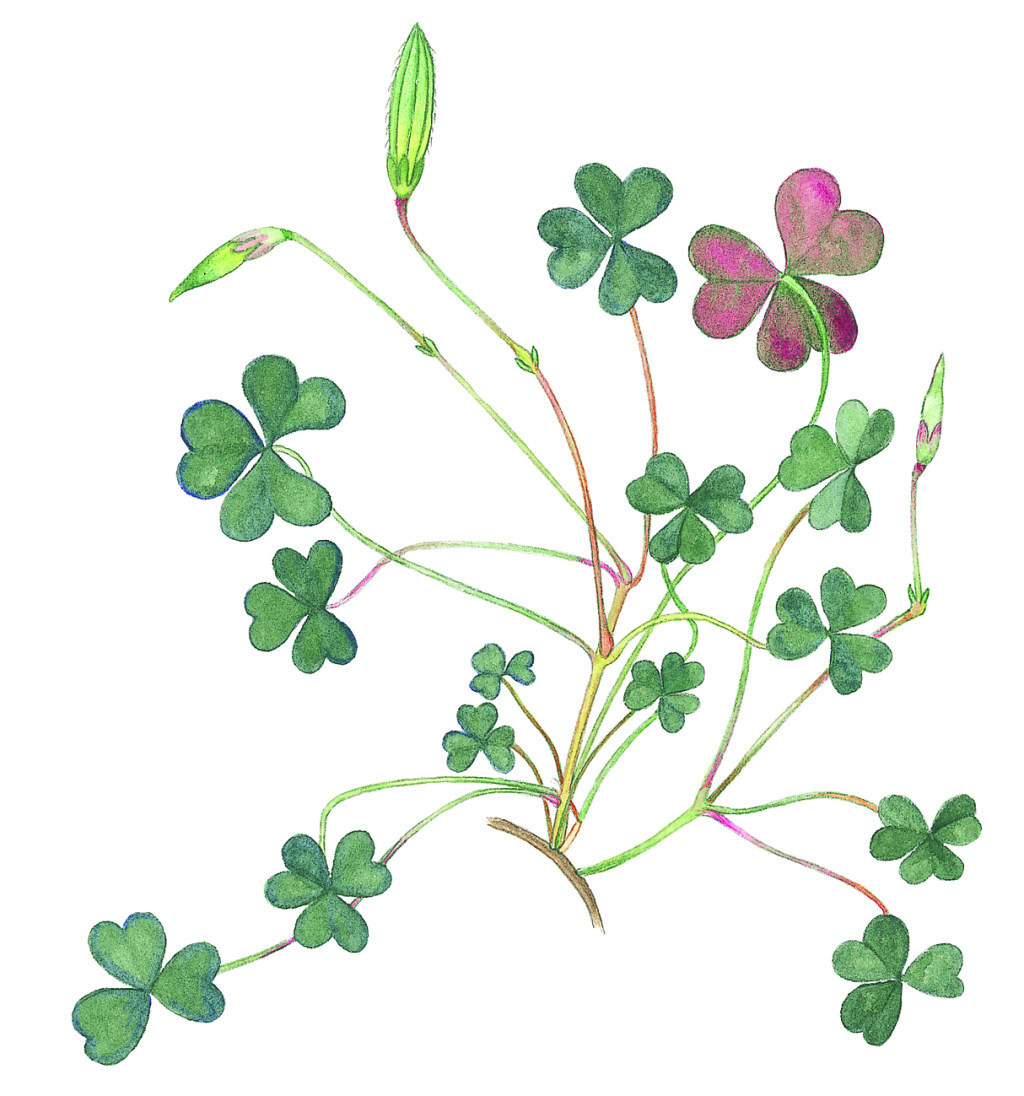Oxalis radicosa
A.Rich. Stout-rooted Wood-sorrelHerb with stems erect or ascending, sometimes creeping but not rooting at nodes, to 30 cm long, stems moderately to densely hairy, the hairs simple, usually and predominantly spreading, with our without underlying shorter retrorse hairs; taproot usually stout and woody; bulbils absent. Leaves cauline, alternate, 3-foliolate; leaflets sessile, obcordate, 2–6(–15) mm long, 3–8(–15) mm wide, bilobed, green, glabrous to pubescent above, pubescent below, margins ciliate, sinus to c. half leaflet length, lobes obovate, apices rounded, 2–8 mm apart; petioles usually 4–7 cm long, with mostly spreading hairs; stipules inconspicuous, to 1–1.5 mm long, keeled, abruptly tapering to petiole, ciliate. Inflorescences axillary, flowers 2–4 per peduncle, held just above or well above leaf level; peduncles usually longer than leaves, covered with curved hairs; pedicels erect or deflexed at maturity (but capsules erect). Sepals oblong, 3–5 mm long, often ciliate. Petals 7–12 mm long, yellow. Capsule 7–22 mm long, 2–3 mm diam., cylindrical, usually densely retrorse-hairy, rarely with occasional spreading septate hairs mixed with retrorse hairs; seeds 1.3–1.7 mm long, transversely ribbed, grooves V-shaped, brown, uniformly coloured, ribs without greyish or whitish lines or blotches. Flowers Sep.–Apr.
LoM, Wim, VVP, VRiv, MuF, GipP, OtP, Gold, CVU, GGr, NIS, EGL, EGU, HSF, HNF, OtR, Strz, HFE, VAlp. All States. Pacific islands, southern Asia, tropical Africa, Madagascar. A widespread species in Victoria, usually found in grasslands, grassy woodlands, and rocky sites in dry open forest. In Victoria it occurs from Corack in the Wimmera, to Mt Cottrell (west of Melbourne), Kilmany in South Gippsland, Pine Mountain in north-eastern Victoria, extending to Buldah in East Gippsland.
Oxalis radicosa can be recognised by its usually erect or ascending habit, presence of a stout taproot, the usually densely hairy stems, and inconspicuous keeled stipules, but see notes for O. chnoodes. O. radicosa may also be confused with O. perennans which has sparsely to densely antrorse-hairy, rarely glabrescent stems, and conspicuous stipules, to c. 3 mm long.
Conn, B.J.; Jeanes, J.A.; Richards, P.G. (1999). Oxalidaceae. In: Walsh, N.G.; Entwisle, T.J., Flora of Victoria Vol. 4, Cornaceae to Asteraceae, pp. 207–218. Inkata Press, Melbourne.
 Spinning
Spinning



